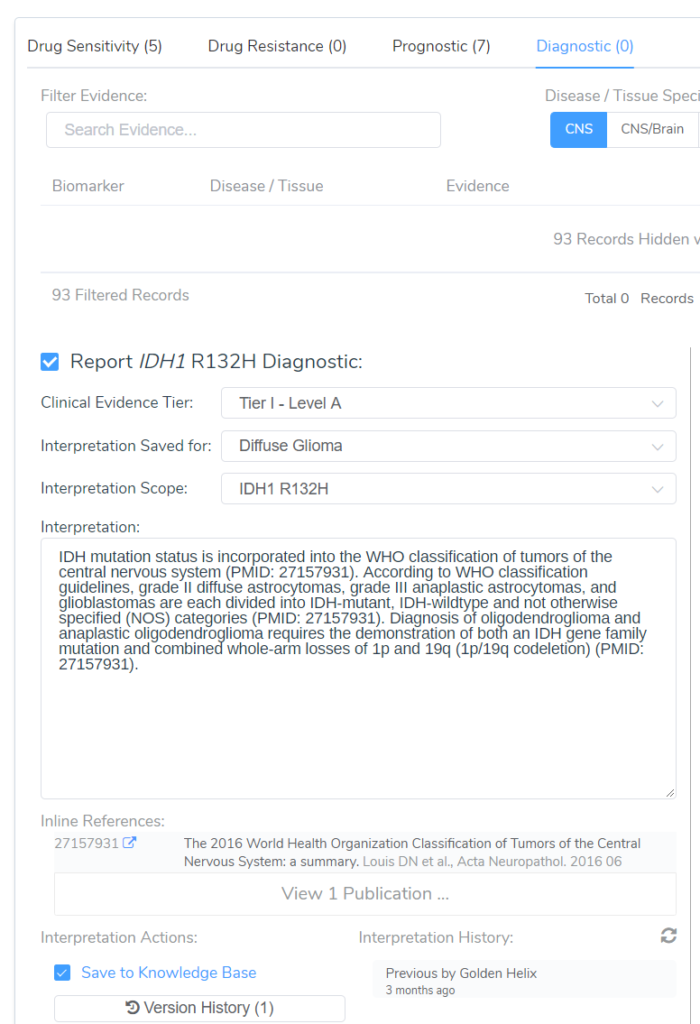Recently we have released blog posts discussing updates to annotations in VarSeq such as ClinVar and COSMIC. Keeping with that trend, in this blog post, I will discuss the most recent updates to the Golden Helix CancerKB database.
For those how may be unfamiliar with the Golden Helix CancerKB source, it is a professional curated set of interpretations for the most common biomarkers and cancer genes. More specifically, users can incorporate report-ready gene descriptions, tumor-specific outcomes and frequencies, and biomarker summaries. Even more, for the most common biomarkers and tumor types, the clinical evidence has been reviewed and labeled with the Tier Level articulated by the AMP Guidelines along with detailed interpretations of drug sensitivity, drug resistance, prognostic and diagnostic evidence.
Golden Helix CancerKB has recently undergone significant updates which will enhance somatic variant analysis in the VSClinical AMP workflow. In this most recent update, the curators focused on writing new interpretations and updating existing interpretations for genes and biomarkers with tier level I evidence according to the AMP Guidelines. Meaning, these new interpretations were focused on the drug sensitivity, resistance, prognostic, and diagnostic interpretations as they pertain to a given biomarker. Compared to the previous version of CancerKB, roughly 120 tier I interpretations were added with over 200 new interpretations overall. In addition, it is important to mention that roughly 150 existing interpretations were revisited and updated making sure that the information in CancerKB is staying as current as possible with the literature.
Below is an example of a new biomarker interpretation that has been incorporated into the latest version of CancerKB. The interpretation for the IDH1 R132H biomarker in diffuse gliomas is auto-populated and ready to be included in a clinical report. However, also depicted on the right are related interpretations to the current biomarker and/or tumor typeset for the evaluation. This is an easy way to capture a wider scope of what might be available in CancerKB for evaluations. In this case, there is another interpretation in CancerKB for the same codon as the R132H biomarker in Acute Myeloid Leukemia.

For the IDH1 R132H biomarker, there is tier level I diagnostic evidence according to the WHO guidelines. In some other cases, to capture the diagnostic evidence the curators will also leverage information from the NCCN Guidelines for tier level classification.

As the project manager for the Golden Helix CancerKB team, I am very passionate about CancerKB and ensuring that the database has high-quality expert-curated interpretations that reflect the most accurate, and up-to-date information that is available in the cancer field. Currently, the team is making progress writing over 500 gene-level interpretations based on the Trusight Oncology genes from Illumina. Also, we plan to implement monthly updates for the CancerKB database, so users can access this content as it is created.
If you enjoyed this blog and want to know even more about CancerKB, its value points, and how it can be used to enhance and streamline your somatic workflow, I have covered these topics and more in a webcast! If you have any urgent inquiries or would like to learn more about our continually updated databases in VSClinical, please reach out to [email protected].